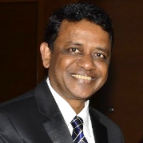Additive Manufacturing of Metals and Composites: Processing, Microstructure and Mechanical Response
A special issue of Micromachines (ISSN 2072-666X). This special issue belongs to the section "D:Materials and Processing".
Deadline for manuscript submissions: closed (20 December 2021) | Viewed by 4562
Special Issue Editors
Interests: metal additive manufacturing; processing; characterization; lightweight materials; nanocomposites
Special Issues, Collections and Topics in MDPI journals
Interests: additive manufacturing; polymer composites 3D printing; cement and ceramic composites; material characterization
Special Issues, Collections and Topics in MDPI journals
Special Issue Information
Dear Colleagues,
Research in additive manufacturing (AM) of metals and composites has witnessed a dramatic rise in global attention for almost past two decades. Development of 3D printers with faster printing speed, new feedstock materials and understanding the process-structure-property relationship in AM parts are among the priority focus areas in both academia and industrial research.
A number of metal additive manufacturing (AM) processes are currently available in the market depending on the heat source type and feeding mechanism of raw materials. However additive manufacturing of composites including polymer composite, metal matrix composite fiber reinforced composites are carried out using both extrusion and laser based techniques. To exploit full potential of AM process, novel material combinations for these special processing conditions need to be developed. This requires a deep understanding of the material consolidation mechanisms during manufacturing process that can be realized through critical microstructural analysis and mechanical testing.
Accordingly, this special issue of Micromachines aims at seeking research articles related to novel AM processing methods and microstructure and multifunctional properties of additively manufactured metals and composite formulations/components. Although the focus of this Special Issue is focused on AM of metal and composite materials, articles dealing with other manufacturing processes with related analogies can also be included, in order to establish differences and possible similarities. Review articles are also most welcome.
Potential topics that fall in the scope of the special issue include, but are not limited to, the following:
- New materials for metal and composite additive manufacturing
- High-throughput microstructure analysis of additively manufactured parts
- Mechanical properties of AM parts including those which are processed differently
- Additive manufacturing with site-specific properties
- Post processing of additive manufacturing parts
Prof. Dr. Manoj Gupta
Prof. Dr. Biranchi Panda
Guest Editors
Manuscript Submission Information
Manuscripts should be submitted online at www.mdpi.com by registering and logging in to this website. Once you are registered, click here to go to the submission form. Manuscripts can be submitted until the deadline. All submissions that pass pre-check are peer-reviewed. Accepted papers will be published continuously in the journal (as soon as accepted) and will be listed together on the special issue website. Research articles, review articles as well as short communications are invited. For planned papers, a title and short abstract (about 100 words) can be sent to the Editorial Office for announcement on this website.
Submitted manuscripts should not have been published previously, nor be under consideration for publication elsewhere (except conference proceedings papers). All manuscripts are thoroughly refereed through a single-blind peer-review process. A guide for authors and other relevant information for submission of manuscripts is available on the Instructions for Authors page. Micromachines is an international peer-reviewed open access monthly journal published by MDPI.
Please visit the Instructions for Authors page before submitting a manuscript. The Article Processing Charge (APC) for publication in this open access journal is 2600 CHF (Swiss Francs). Submitted papers should be well formatted and use good English. Authors may use MDPI's English editing service prior to publication or during author revisions.
Keywords
- Metal additive manufacturing,
- Composite 3D printing,
- Processing technology
- Microstructure characterization







